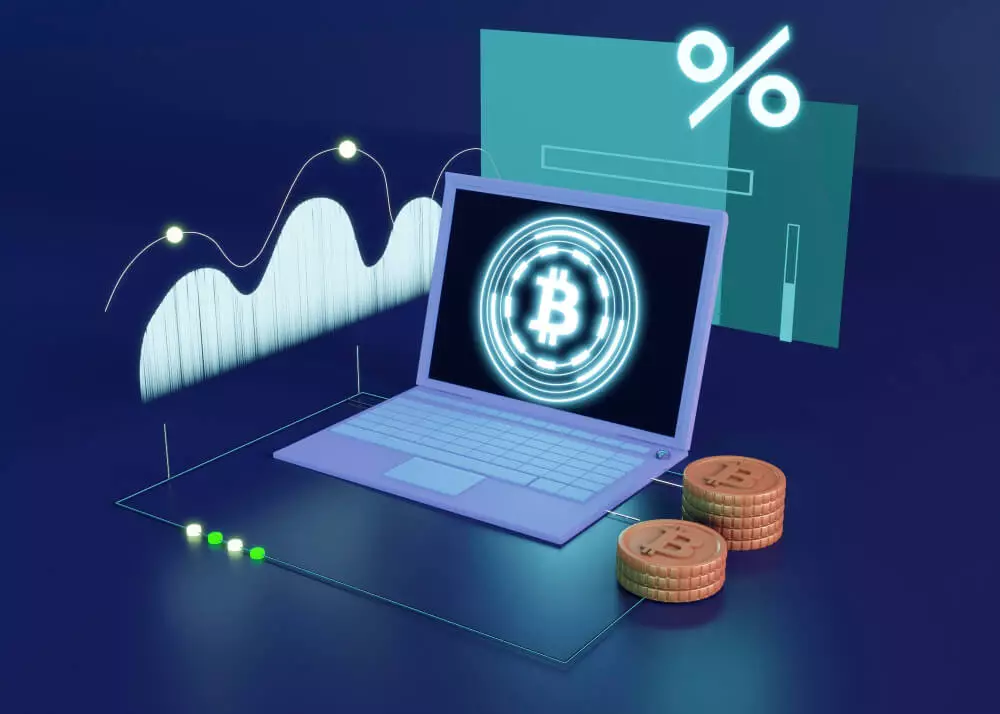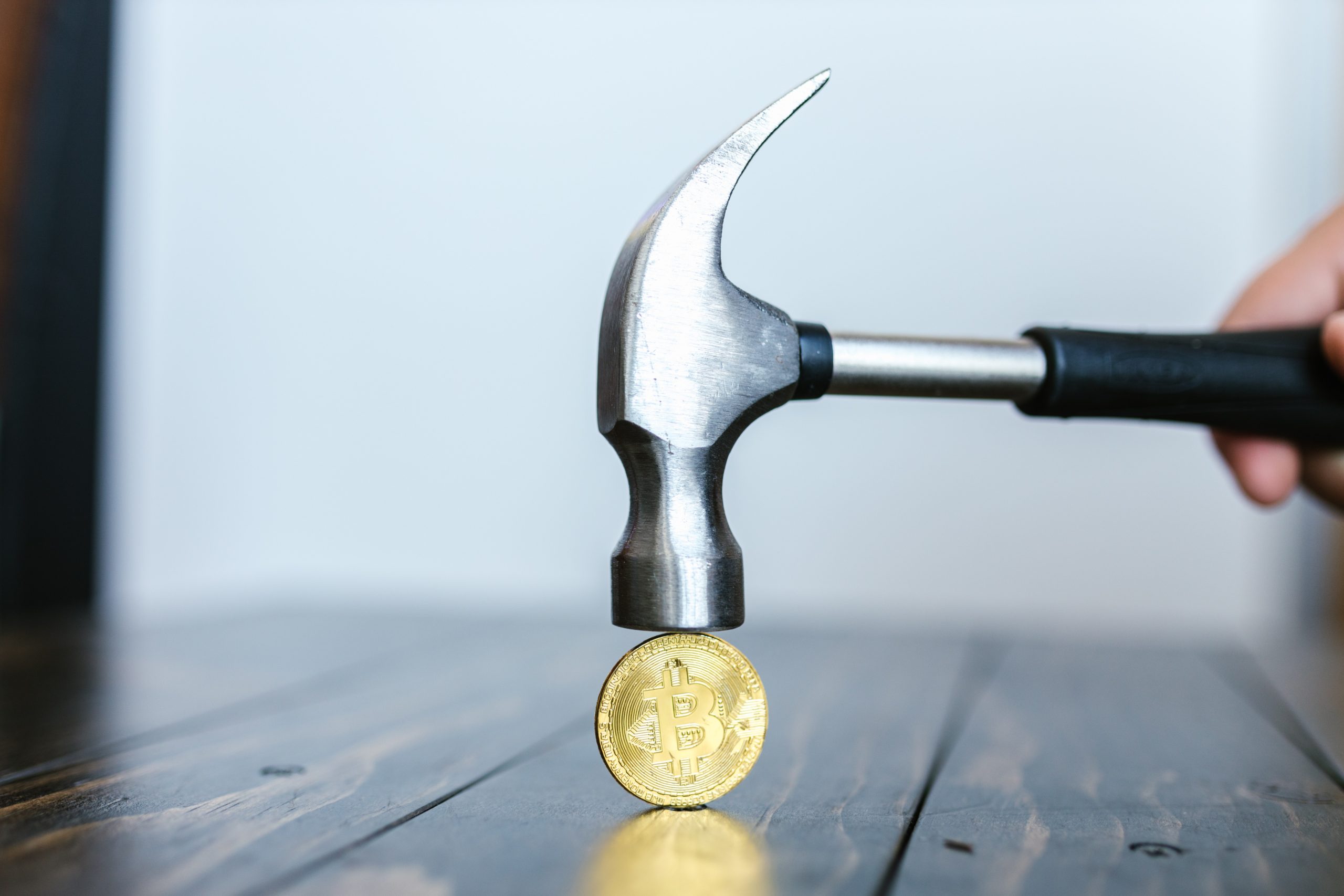
With cryptocurrencies making a strong entry into the mainstream, an increasing number of people are developing an interest in this new and strange world of blockchain technology on a daily basis.
Many of these individuals become interested in cryptos after hearing that it is possible to profit from them.
If you’re one of those individuals, you’re in luck because I’m going to teach you how to mine cryptocurrency today.
We’ll begin by defining the term – we’ll discuss what cryptocurrency mining is and why people bother with it in the first place.
Then I’ll discuss the various methods for mining cryptocurrency – their advantages and disadvantages, for example.
Learn How To Trade Cryptocurrencies Like A Pro.
Table of Contents
What Is Cryptocurrency Mining?
The majority of people view crypto mining as a means of creating new coins. Crypto mining, on the other hand, entails validating cryptocurrency transactions and adding them to a distributed ledger via a blockchain network.
Most importantly, crypto mining prevents digital currency from being double-spent on a distributed network.
As is the case with physical currencies, when a member spends cryptocurrency, the digital ledger must be updated by debiting one account and crediting another.
However, a digital currency’s disadvantage is that digital platforms are easily manipulated. As a result, Bitcoin’s distributed ledger allows only verified miners to update the digital ledger.
This places an additional burden on miners to protect the network from double spending.
Meanwhile, new coins are created to compensate miners for their contributions to network security. Due to the lack of a centralized authority in distributed ledgers, the mining process is critical for validating transactions.
As a result, miners are rewarded for securing the network by participating in the transaction validation process, which increases their odds of winning newly minted coins.
A proof-of-work (PoW) consensus protocol has been implemented to ensure that only verified crypto miners can mine and validate transactions. Additionally, PoW protects the network from external attacks.
How to Start Mining Cryptocurrencies
Cryptocurrency mining requires computers equipped with specialized software capable of solving complex cryptographic mathematical equations.
During the early stages of the technology, cryptocurrencies such as Bitcoin could be mined using a simple CPU chip on a home computer.
However, due to the increasing difficulty levels of most cryptocurrencies, CPU chips have become unsuitable for mining.
Today, cryptocurrency mining requires either a specialized graphics processing unit (GPU) or an application-specific integrated circuit (ASIC) miner.
Additionally, the mining rig’s GPUs must always be connected to a stable internet connection. Additionally, each crypto miner must be a member of an online crypto mining pool.
Different Methods of Mining Cryptocurrencies
Different cryptocurrency mining methods require varying amounts of time. For example, in the early days of the technology, CPU mining was the preferred method of mining for the majority of miners.
However, many believe CPU mining is too slow and inefficient today, as it takes months to earn even a small profit, given the high cost of electricity and cooling and increased difficulty across the board.
GPU mining is an additional method of cryptocurrency mining. It maximizes computational power by combining multiple GPUs into a single mining rig. A motherboard and cooling system are required for GPU mining.
ASIC mining, on the other hand, is another method of cryptocurrency mining. Unlike GPU miners, ASIC miners are purpose-built for cryptocurrency mining, and thus produce more cryptocurrency units than GPU miners.
They are, however, expensive, which means they quickly become obsolete as mining difficulty increases.
Cloud mining is gaining popularity as the costs of GPU and ASIC mining continue to rise. Individual miners can now leverage the computing power of large corporations and dedicated crypto mining facilities through cloud mining.
Individual cryptocurrency miners can use the Internet to locate both free and paid cloud mining hosts and rent a mining rig for a specified period of time. This is the most hands-off method of mining cryptocurrencies.
Mining Pools
Many individual miners are unable to mine a single block on their own due to a lack of necessary equipment.
As a last resort, some miners join mining pools in order to have some hope of making a profit.
A mining pool is a place where miners can pool their hashing power in order to earn a larger share of the profits.
According to how much power they contribute to the pool, each member will receive an equal share of the reward.
The use of mining pools is controversial in the cryptocurrency community because they tend to consolidate power rather than promote further decentralization of the network.
Is Crypto Mining Worth It?
Several factors go into determining the value of crypto mining. Regardless of whether a prospective miner opts for a CPU, GPU, ASIC, or cloud miner, the hash rate, electricity consumption, and overall cost of the mining rig should always be taken into account. In general, crypto mining equipment uses a lot of electricity and generates a lot of heat.
For example, it takes an ASIC miner about ten minutes to mine a bitcoin using 72 terawatts of power. As mining technology improves and becomes more difficult, these numbers will change over time.
With GPU and ASIC mining rigs in particular, electricity consumption, electricity costs, and cooling costs need to be taken into account in addition to the machine’s price.
In order to determine whether or not a mining operation will be profitable, it is necessary to take the difficulty of the cryptocurrency into account.
Which Cryptocurrency to Mine?
Depending on the type of cryptocurrency mining you’ve decided to engage in, you’ll need to choose your equipment accordingly.
Bitcoin, Ethereum, and Dash are among the most popular cryptocurrencies. Keep in mind, however, that Bitcoin mining is the most difficult of them all because there are so many miners around the world trying to get their hands on a small portion of the coin,
which makes it even more difficult. You may have to wait for days or even weeks for the first drops of Bitcoin to arrive.
Ethereum or another lesser-known cryptocurrency would be your best bet in this situation.
Depending on your method of choice, check out the prices, figure out when your return on investment would occur, and do some math, and you’ll have the answer in no time!
Learn How To Trade Cryptocurrencies Like A Pro.
Related Question And Answer
Which crypto to mine for beginners?
Bitcoin, Ethereum, Tether, Binance Coin and XRP are among the most popular digital currencies. CoinMarketCap has a complete list, complete with market capitalization and price information, that you can review. To keep things simple, I’ll refer to cryptocurrencies as a whole as “Bitcoin” and just “Bitcoin” when referring to a specific cryptocurrency.
How long does it take to mine 1 bitcoin?
With today’s difficulty level, a solo miner could take nearly five years to mine just one bitcoin. That is the average rate for miners, even those who use the most efficient mining equipment.
Is crypto mining illegal?
More and more countries have legalized bitcoin ownership and mining. According to a 2018 report, Algeria, Egypt, Morocco, Bolivia, Ecuador, Nepal, and Pakistan were among the countries where it was illegal. 8 Bitcoin mining and use are still legal in many countries around the world.
Can I mine Bitcoin for free?
Free Bitcoin mining software can be found here: EasyMiner: A free Bitcoin miner with a graphical user interface for Windows, Linux, and Android devices. BTCMiner: Bitcoin miner BTCMiner has a USB interface for communication and is open source.
How much do Bitcoin miners make a day?
At current exchange rates, Gitzes’ miners generate about.0055 bitcoins per day after paying the 1.25 percent mining pool fee. Since electricity costs around $30 a day, he makes $186 a day, or about $5,700 a month.
Can I mine Bitcoin on my phone?
Bitcoin Miner is an Android app that allows you to mine Bitcoin and earn money at the same time. Installing the app on your phone will allow the app’s developer to make money while it works without you even noticing.
Is it possible to mine 1 Bitcoin a day?
In a day, how much bitcoin can you expect to have been mined? A total of 144 blocks are mined each day because each bitcoin block takes ten minutes to create. There are currently 900 BTC in daily rewards at the current rate following the recent bitcoin halving.
How many Bitcoins are left?
How many Bitcoins are still available for mining? Currently, there are 2,250,681.3 bitcoins available for mining. Cryptocurrency mining is a time-consuming and energy-intensive process that requires a significant amount of computer processing power. Mining is the process of creating new coins by using a computer to solve a mathematical problem with a 64-digit solution.
What is the fastest way to mine Bitcoins?
The simplest way to get started with bitcoin mining is to join a cloud bitcoin mining service. Cloud bitcoin mining enables an individual to pay for the use of bitcoin mining hardware and software without incurring the overhead costs associated with a personal mining rig.
Conclusion
Those who aspire to become cryptocurrency miners must have a strong desire to learn and a thirst for knowledge. As new technologies emerge, the crypto mining market is constantly evolving.
In order to maximize their profits, professional miners constantly research and adjust their mining strategies in order to get the most out of their efforts.
In contrast, climate change advocates have grown increasingly alarmed as fossil fuels continue to be burned in order to power mining operations.
For Ethereum, this has led to a shift from Proof-of-Work (PoW) systems to more sustainable ones, such as Proof of Stake (PoS).



